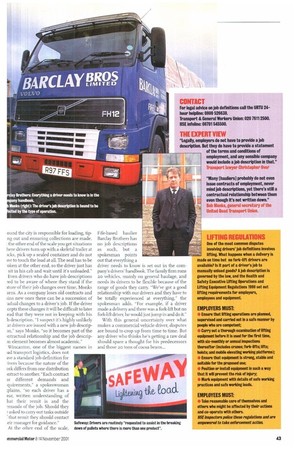LIFTING REGULATIONS
Page 43

If you've noticed an error in this article please click here to report it so we can fix it.
One of the most common disputes involving drivers' job definitions involves lifting. What happens when a delivery is made on time but no fork-lift drivers are available? Is it part of a driver's job to manually unload goods? A job description is governed by the law, and the Health and Safety Executive Lifting Operations and Lifting Equipment Regulations 1998 set out lifting requirements for employers, employees and equipment.
EMPLOYERS MUST:
Ensure that lifting operations are planned, supervised and carried out in a safe manner by people who are competent; Carry out a thorough examination of lifting equipment before it is used for the first time, with six-monthly or annual inspections thereafter (includes cranes; fork-lifts; lifts; hoists; and mobile elevating working platforms); t Ensure that equipment is strong, stable and suitable for the proposed use; 0-Position or install equipment in such a way that it will prevent the risk of injury; Mark equipment with details of safe working practices and safe working loads.
EMPLOYEES MUST: Take reasonable care of themselves and others who might be affected by their actions and co-operate with others.
HSE inspectors police these regulations and are empowered to take enforcement action.












































































































































